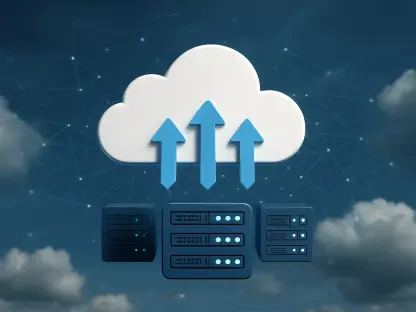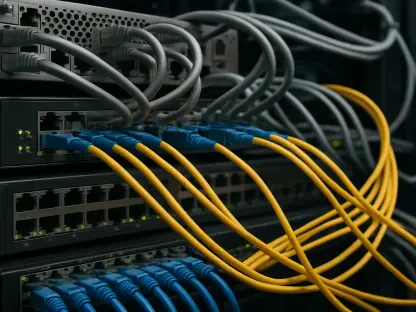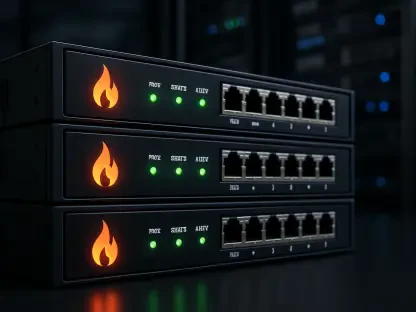The rapid advancement of Artificial Intelligence (AI) systems is spurring an urgent need for novel solutions to enhance communication and integration among various components. As AI architectures become increasingly complex, the challenge lies not only in elevating their capabilities but also in ensuring smooth interoperability. This article explores four groundbreaking protocols—Model Context Protocol (MCP), Agent Communication Protocol (ACP), Agent-to-Agent Protocol (A2A), and Agent Network Protocol (ANP)—that aim to tackle and overcome core compatibility challenges. These protocols represent a significant shift in how AI systems interact, from dynamic tool invocation to sophisticated decentralized network coordination, thereby paving the way for the next generation of AI.
Enhancing Tool Invocation
The Shift from Traditional Methods
In the past, AI systems extensively utilized static prompts and rigidly hardcoded logic to execute sophisticated tasks. These traditional methods, while effective to some extent, lacked the scalability and robustness that modern applications demand. Such limitations have prompted developers to seek out more flexible and efficient schemes of interaction. Old methods often led to brittle systems, requiring constant updates and manual adjustments, thus hindering operational efficiency. As AI models become more sophisticated, the need for innovative protocols capable of supporting adaptive and scalable interactions has become increasingly apparent. The introduction of newer frameworks points to a transition from outdated methods toward more resilient and adaptable solutions, ensuring AI systems can operate at maximum efficiency in various environments.
Introducing the Model Context Protocol (MCP)
The Model Context Protocol (MCP) represents a transformative step in tool invocation by introducing a JSON-RPC-based mechanism, serving as a versatile interface layer. Designed to enhance flexibility and vendor neutrality, this protocol allows for the seamless integration of various tools across diverse agent infrastructures. The uniqueness of MCP lies in its ability to streamline and manage real-time validation and execution processes, much like a “USB-C” port does for computing capabilities. It enables dynamic registration of tools without the necessity for retraining agents or rewriting prompts. This adaptability is crucial for industries aiming for enterprise-level deployments, as it promises secure execution paths and supports modular tool replacements. By eliminating the constant need for adjustments, MCP stands as a crucial innovation that fosters interoperability and ensures secure and efficient tool utilization within AI frameworks.
Optimizing Agent Communication
The Need for Reliable Frameworks
Effective communication is vital for the success of AI systems, especially in scenarios where multiple agents must collaborate for task completion. Conventional RPC interfaces often stumble in scenarios requiring asynchronous, multimodal communications, presenting a gap in reaching optimal efficiency. The increasing complexity of AI systems emphasizes the importance of a reliable framework to ensure that agents can interact seamlessly, exchanging data and signals as needed. In environments where tasks need to be distributed across various nodes, having an adaptable framework becomes essential. Traditional systems, lacking the capacity for seamless resource sharing or collaboration, often result in ineffectual coordination, leading to performance bottlenecks. A robust framework ensures that interactions remain fluid and efficient, facilitating smoother workflows and enhancing the capabilities of AI systems.
The Role of Agent Communication Protocol (ACP)
The Agent Communication Protocol (ACP) has emerged as a cornerstone in optimizing agent collaboration by offering a REST-native, asynchronous-first messaging layer. This protocol ensures reliability and observability through the use of multipart messages that can include structured data and contextual instructions. ACP allows agents to send streaming responses, facilitating incremental updates during execution—a crucial feature for maintaining operational fluidity. An integral aspect of ACP is its emphasis on logging communications and tracing errors, providing detailed insights that are invaluable for debugging and analyzing performance. Its SDK-agnostic nature, adhering to open standards, ensures compatibility across multiple programming languages and existing HTTP-based systems. By supporting modalities that are integral to modern AI interactions, ACP enhances the agents’ capability to collaborate effectively, thus offering significant improvements over traditional communication frameworks.
Facilitating Peer-to-Peer Collaboration
Beyond Localized Domains
As artificial intelligence systems expand beyond isolated organizational domains, the demand for secure cross-domain collaboration has become increasingly pressing. The intricacy of interactions required across multiple organizations or cloud environments necessitates frameworks capable of dynamic negotiation and coordination. In many cases, traditional centralized systems fail to provide the flexibility needed for these expanding interactions, prompting a shift toward more decentralized approaches. Secure negotiation and coordination between agents, regardless of the location, have become critical as they seek to manage resources, schedules, and data across different environments securely. Innovative solutions focused on enabling such expansions ensure that organizations can operate with higher efficiency and collaboration without risking exposure to internal logic or compromising on security.
Exploring Agent-to-Agent Protocol (A2A)
The Agent-to-Agent Protocol (A2A) introduces a robust framework for peer-to-peer communications, grounded in capability-based delegation. Key to the A2A infrastructure are Agent Cards, self-contained JSON descriptors that advertise an agent’s abilities and communication endpoints. These descriptors enable transparent negotiations and facilitate task delegation and real-time updates without centralized orchestration. The A2A framework supports various transport methods, including HTTP and Server-Sent Events, to ensure low-latency coordination. By enabling modular task delegation, this protocol allows agents to negotiate terms of collaboration securely. This contributes to a more organic task distribution where agents exercise decision-making autonomy. The decentralization offered by A2A supports efficient execution of tasks, providing flexibility and ensuring secure interoperability across different operational domains.
Decentralized Network Coordination
Open-Web Collaboration Challenges
The coordination of AI agents over the internet poses challenges related to discovery, authentication, and trust management. Ensuring secure and effective operations requires innovative approaches that go beyond traditional centralized systems, which can hinder scalability and security across expansive networks. As AI systems integrate more extensively across the web, they face the issue of securely exchanging information and capabilities in a trustworthy manner. Conventional registry systems often imply significant overhead and potential vulnerabilities, as they may not provide the requisite level of scalability or resilience. Addressing these challenges demands advanced frameworks capable of navigating the complexities of online collaborations, ensuring that information flows are not impeded while maintaining a secure and trusted environment.
The Promise of Agent Network Protocol (ANP)
Agent Network Protocol (ANP) offers a groundbreaking framework that addresses challenges inherent in open-web collaboration. By integrating semantic web technologies with cryptographic identity models, ANP enables decentralized discovery and secure operation across diverse environments. Leveraging technologies like Decentralized Identifiers (DIDs) and JSON-LD graphs, ANP allows agents to establish verifiable identities and engage in secure encrypted communications. This ensures trust and fosters cooperative engagements across sectors without the need for a central registry. Crucial to ANP is the ability to publish metadata and capability graphs, eliminating the need for a middleman in discovery processes. By emphasizing security and privacy, ANP supports the growth of agent marketplaces and federated research networks, paving the way for secure, autonomous collaborations that are resilient and adaptable to varying operational contexts.
Evolution of Interoperability Protocols
From Static to Dynamic Solutions
The evolution of interoperability protocols accentuates a journey from rigid, static systems to adaptable, dynamic solutions. Initially, the use of symbolic languages and tight coupling in AI systems was prevalent, but they suffered from verbosity and inflexibility. Over time, there was a shift to dynamic paradigms that allowed for adaptable exchanges and unified workflows, paving the way for the innovative protocols explored today. As AI applications have diversified, the need for dynamic and extensible solutions became apparent, inspiring the creation of new interoperability models. These enable seamless coordination and capability exchange across diverse systems, supporting a more integrated and efficient operational framework.
Roadmap to Scalable Systems
The swift progress in Artificial Intelligence (AI) systems has created a pressing demand for innovative solutions to improve communication and integration among different components. With AI architectures growing more intricate, the task is not only about boosting their capabilities but also about ensuring seamless interoperability. This article delves into four pioneering protocols: Model Context Protocol (MCP), Agent Communication Protocol (ACP), Agent-to-Agent Protocol (A2A), and Agent Network Protocol (ANP). These protocols aim to address and resolve key compatibility issues. They signify a substantial transformation in how AI systems interact, moving from dynamic tool invocation to advanced decentralized network coordination. By doing so, they are opening the door to the next generation of AI. With these protocols, the challenges of compatibility are being tackled head-on, offering a framework that supports complex interactions and integration for AI systems, facilitating progress and innovation in the field.









